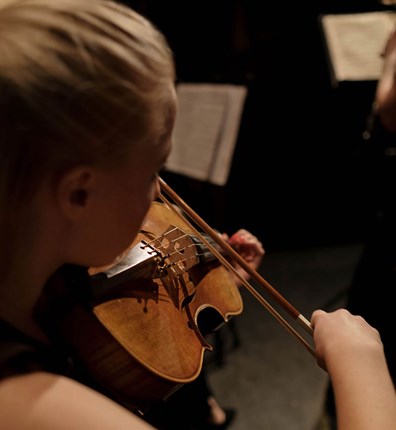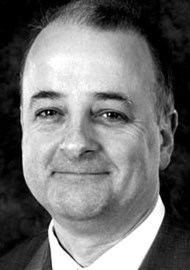Musicians are understandably anxious about their hearing, and recent high-profile cases of noise-related hearing loss have resulted in huge changes in the music industry. Chris Aldren (otologist and violinist) explains.
In the recent Oscar-winning movie, Sound of Metal, heavy metal drummer, Ruben, develops severe tinnitus and profound deafness. Whether due to his life of rock music or another unspecified cause, the devastation to his career, and indeed his life, is graphically portrayed by actor Riz Ahmed.
Musicians are highly aware of their hearing ability but also at daily risk of noise-induced hearing loss as their career is based on making noise. And of course, musicians are also susceptible to all other otological problems like the general population. They are often sensitive to minor changes in their hearing and understandably worry that if things deteriorate, their careers may be at risk.

Since 2008, the Control of Noise at Work Regulations, published in 2005, have applied to all workplaces without exception. This also applies to workplaces for musicians, such as concert halls and recording studios. These regulations state that a daily noise exposure averaged over eight hours (Lepd) of 80dB requires employers to provide information, training and make hearing protection available. When the Lepd reaches 85dB, employers are required to take measures to reduce noise exposure, enforce the wearing of hearing protection and provide hearing health surveillance. Musicians are frequently exposed to sound pressure levels well above these figures and, whilst it is true that many musicians do not work eight-hour days, working a six-hour day only reduces the Lepd from 86dB to 85dB.
“The musicians are also often seated at different levels, with the brass players elevated to prevent the sound directly affecting the back desks of the string sections”
In a typical two-session (six-hour) day, musicians in the BBC Symphony Orchestra rehearsing at the BBC studios in Maida Vale, had Lepds of 79 to 92dB. The higher levels were found in the trumpets and trombones, with the lowest levels in the front of the violins and the conductor. These levels are clearly in excess of national regulations for many of the musicians. A recent case of acoustic shock in a viola player in the Orchestra of the Royal Opera House in London resulted in a settlement of £750,000 when it transpired that during a Wagner opera rehearsal, the viola player, who had been sitting in the orchestral pit in front of eight trombones, was exposed to over 130dB. The court ruled that acoustic shock was a clinical entity. They specifically commented that “the risk of injury through noise is not removed if the noise – in the form of music – is the deliberate and desired objective rather than an unwanted by-product as would be the case in relation to the use of pneumatic machinery.” As a consequence, orchestral management throughout the world have increased their efforts to protect musician’s hearing.
As well as providing regular hearing testing, orchestras encourage the use of ear plugs during both rehearsals and performances. Transparent acoustic shields in front of the brass sections are a frequent sight at concerts. The musicians are also often seated at different levels, with the brass players elevated to prevent the sound directly affecting the back desks of the string sections.
Musician patients should be made aware of the issues of noise-induced hearing loss and encouraged to monitor their own sound environment using decibel meters, which are now freely available as phone apps. They should have regular hearing tests.
Use of noise attenuating ear plugs amongst musicians is low as they often find it affects their ability to hear their own playing. However, ear plug use should be encouraged initially when practising in private, then when rehearsing in ensembles and, finally, in performance. Whilst at first it can be difficult to perform using plugs, it usually becomes easier over time. Correctly fitted custom-made ear plugs with adjustable filters allow flat frequency attenuation of sound and are frequently more acceptable to musicians. The use of ear plugs is increasing amongst younger musicians due to wider awareness of the issues of noise-induced damage. When promoting the use of ear plugs, it is important to emphasise the often slow and imperceptible onset, but irreversibility, of noise-induced hearing loss.
“Recent systematic review found 63.5% of this group of musicians have hearing loss, compared to 32.8% in classical musicians”
As part of their hearing health, musicians must also be encouraged to think about their noise exposure outside of work, whether this may be private practice, recreational listening to music, or environmental sound exposure on the tube or riding a motorbike. These all add to the daily sound dose and should be moderated where possible.
Pop and rock musicians are frequently exposed to even higher noise levels, and it is perhaps therefore no surprise to learn that a recent systematic review found 63.5% of this group of musicians have hearing loss, compared to 32.8% in classical musicians [1]. Typically, it is frequencies above 2KHz that are affected. Violinists tend to suffer from more hearing loss in the left ear as it is closer to the violin.
Like ear plugs, the use of hearing aids by musicians is disappointingly low. The perceived stigma of hearing aids, common in the general population, is even higher amongst musicians. They fear being recognised as a deaf musician may affect their ability to get work. However, for many musicians, hearing aids offer great benefits to the quality of their playing and ability to work. As with ear plugs, they should be encouraged to persevere with using the aids to become accustomed to their new hearing. Again, use during practising is often a useful first step. Of course, severe sensory hearing loss undoubtedly causes major problems for the performing musician and can, on occasion, be career ending.
“Correctly fitted custom-made ear plugs with adjustable filters allow flat frequency attenuation of sound and are frequently more acceptable to musicians”
The recent systematic review showed approximately 25% of all musicians studied complained of tinnitus. Studies in musicians have shown a link of tinnitus to lifetime noise exposure. Hyperacusis with discomfort to certain sounds is commoner in rock and pop musicians at 27%, but still 19% in classical musicians. Diplacusis, where pitch is perceived differently in the two ears, is less common at around 8% but is a particular problem for musicians, especially if they play an instrument where pitch must be determined by the player, such as the violin or the trombone. Fortunately issues of tinnitus and diplacusis often improve over time but, as Ruben found out in Sound of Metal, continued exposure to high levels of sound does not help and musicians may need to take time out from work. In severe cases, a change of career may be required.
Reference
1. Di Stadio A, Dipietro L, Ricci G, et al. Hearing Loss, Tinnitus, Hyperacusis, and Diplacusis in Professional Musicians: A Systematic Review. Int J Environ Res Public Health 2018;15(10):1-14.
Further Reading
1. Schmidt JS, Paarup HM, Bælum J. Tinnitus Severity Is Related to the Sound Exposure of Symphony Orchestra Musicians Independently of Hearing Impairment. Ear Hear 2019;40(1):88-97.
2. Hansford, R. Music, Noise & Hearing: How to play your part. A Guide for Musicians. BBC. 2011
http://downloads.bbc.co.uk/safety/
documents/safety-guides/audio-and-music/
Safety-Musician_noise_guide_Part_I.pdf
3. Sound advice. Control of noise at work in music and entertainment. Health and Safety Executive 2008.
www.hse.gov.uk/pubns/priced/hsg260.pdf
Links last accessed July 2021.





